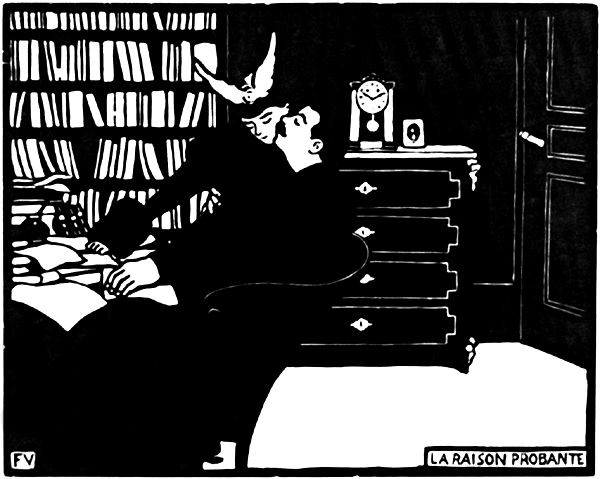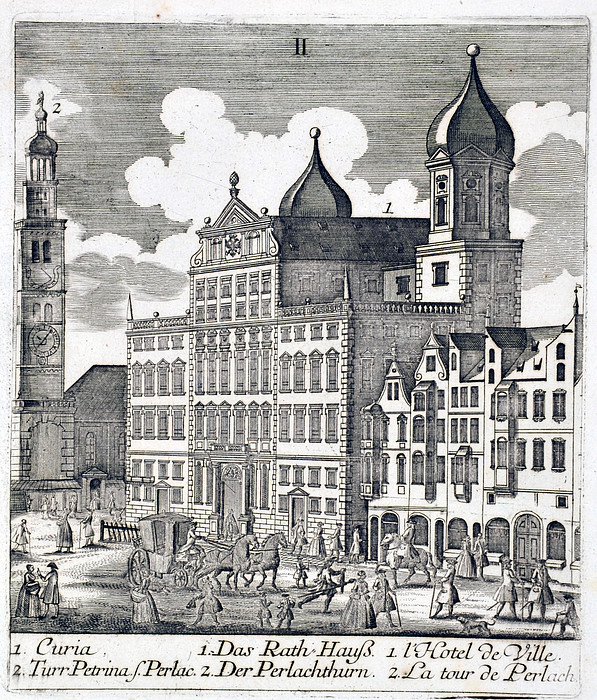|
German Renaissance
The German Renaissance, part of the Northern Renaissance, was a cultural and artistic movement that spread among German thinkers in the 15th and 16th centuries, which developed from the Italian Renaissance. Many areas of the arts and sciences were influenced, notably by the spread of Renaissance humanism to the various German states and principalities. There were many advances made in the fields of architecture, the arts, and the sciences. Germany produced two developments that were to dominate the 16th century all over Europe: printing and the Protestant Reformation. One of the most important German humanists was Konrad Celtis (1459–1508). Celtis studied at Cologne and Heidelberg, and later travelled throughout Italy collecting Latin and Greek manuscripts. Heavily influenced by Tacitus, he used the ''Germania'' to introduce German history and geography. Eventually he devoted his time to poetry, in which he praised Germany in Latin. Another important figure was Johann Re ... [...More Info...] [...Related Items...] OR: [Wikipedia] [Google] [Baidu] [Amazon] |
Albrecht Dürer - Portrait Of Maximilian I - Google Art Project
Albrecht ("noble", "bright") is a given name or surname of German language, German origin and may refer to: First name * Albrecht Agthe, (1790–1873), German music teacher * Albrecht Altdorfer, (c. 1480–1538) German Renaissance painter * Albrecht Becker, (1906–2002), German production designer, photographer, and actor * Albrecht Berblinger, (1770–1829), German constructor (the tailor of ulm) * Albrecht Brandi, (1914–1966), German U-boat commander in World War II * Archduke Albrecht, Duke of Teschen (1817–1895) general who controlled the Austrian Army * Albrecht, Duke of Württemberg, (1865–1939), German field marshal in World War I * Albrecht von Wallenstein, (1583–1634), Bohemian soldier and politician during the Thirty Years' War * Albrecht Dieterich, (1866–1908) German classical philologist and religious scholar * Albrecht Dietz, (1926–2012), German entrepreneur and scientist * Albrecht Dürer, (1471–1528), German artist and mathematician * Albrecht Dürer ... [...More Info...] [...Related Items...] OR: [Wikipedia] [Google] [Baidu] [Amazon] |
Printmaking
Printmaking is the process of creating work of art, artworks by printing, normally on paper, but also on fabric, wood, metal, and other surfaces. "Traditional printmaking" normally covers only the process of creating prints using a hand processed technique, rather than a photographic reproduction of a visual artwork which would be printed using an electronic machine (Printer (computing), a printer); however, there is some cross-over between traditional and digital printmaking, including risograph. Prints are created by transferring ink from a Matrix (printing), matrix to a sheet of paper or other material, by a variety of techniques. Common types of matrices include: metal plates for engraving, etching and related intaglio printing techniques; stone, aluminum, or polymer for lithography; blocks of wood for woodcuts and wood engravings; and linoleum for linocuts. Screens made of silk or synthetic fabrics are used for the screen printing process. Other types of matrix substrates ... [...More Info...] [...Related Items...] OR: [Wikipedia] [Google] [Baidu] [Amazon] |
Movable Type
Movable type (US English; moveable type in British English) is the system and technology of printing and typography that uses movable Sort (typesetting), components to reproduce the elements of a document (usually individual alphanumeric characters or punctuation marks) usually on the medium of paper. Overview The world's first movable type printing technology for paper books was made of porcelain materials and was invented around 1040 AD in China during the Northern Song dynasty by the inventor Bi Sheng (990–1051). The earliest printed paper money with movable metal type to print the identifying Banknote seal (China), code of the money was made in 1161 during the Song dynasty. In 1193, a book in the Song dynasty documented how to use the copper movable type. The oldest extant book printed with movable metal type, Jikji, was printed in Korea in 1377 during the Goryeo dynasty. The spread of both movable-type systems was, to some degree, limited to primarily East Asia. T ... [...More Info...] [...Related Items...] OR: [Wikipedia] [Google] [Baidu] [Amazon] |
Printing
Printing is a process for mass reproducing text and images using a master form or template. The earliest non-paper products involving printing include cylinder seals and objects such as the Cyrus Cylinder and the Cylinders of Nabonidus. The earliest known form of printing as applied to paper was woodblock printing, which appeared in China before 220 AD for cloth printing. However, it would not be applied to paper until the seventh century.Shelagh Vainker in Anne Farrer (ed), "Caves of the Thousand Buddhas", 1990, British Museum publications, Later developments in printing technology include the movable type invented by Bi Sheng around 1040 AD and the printing press invented by Johannes Gutenberg in the 15th century. The technology of printing played a key role in the development of the Renaissance and the Scientific Revolution and laid the material basis for the modern knowledge-based economy and the spread of learning to the masses. History Woodblock printing Woodblo ... [...More Info...] [...Related Items...] OR: [Wikipedia] [Google] [Baidu] [Amazon] |
HMF Duerer Gruenewald Harrich Heller-Altar DSC 6312
HMF may refer to: * HandMade Films, a British film company * ''Hannah Montana Forever'' (''Hannah Montana'' season 4) * His or Her Majesty's Frigate, a ship prefix; see Her Majesty's Ship * Hmong Don language, spoken in Vietnam * Human milk fortifier * Hydroxymethylfurfural Hydroxymethylfurfural (HMF), also known as 5-(hydroxymethyl)furfural, is an organic compound formed by the dehydration of reducing sugars. It is a white low-melting solid (although commercial samples are often yellow) which is highly soluble in b ..., an organic compound derived from dehydration of certain sugars * Hypergol Maintenance Facility, at the Kennedy Space Center in Florida, United States * Norrlandsflyg, a Swedish helicopter operator {{disambiguation ... [...More Info...] [...Related Items...] OR: [Wikipedia] [Google] [Baidu] [Amazon] |
Global Spread Of The Printing Press
Following the invention of the printing press in the German city of Mainz by Johannes Gutenberg , Western printing technology spread across the world, and was adopted worldwide by the end of the 19th century. The technology, which mechanized the process of printing with moveable type, displaced the manuscript and block printing. In the Western world, the operation of a press became synonymous with the enterprise of publishing and lent its name to a new branch of media, the " press" (see List of the oldest newspapers). Spread of Gutenberg's press Germany Gutenberg's first major print work was the 42-line Bible in Latin, probably printed between 1452 and 1454 in the German city of Mainz. After Gutenberg lost a lawsuit against his investor, Johann Fust, Fust put Gutenberg's employee Peter Schöffer in charge of the print shop. Thereupon Gutenberg established a new one with the financial backing of another money lender. With Gutenberg's monopoly revoked, and the techno ... [...More Info...] [...Related Items...] OR: [Wikipedia] [Google] [Baidu] [Amazon] |
Renaissance
The Renaissance ( , ) is a Periodization, period of history and a European cultural movement covering the 15th and 16th centuries. It marked the transition from the Middle Ages to modernity and was characterized by an effort to revive and surpass the ideas and achievements of classical antiquity. Associated with great social change in most fields and disciplines, including Renaissance art, art, Renaissance architecture, architecture, politics, Renaissance literature, literature, Renaissance exploration, exploration and Science in the Renaissance, science, the Renaissance was first centered in the Republic of Florence, then spread to the Italian Renaissance, rest of Italy and later throughout Europe. The term ''rinascita'' ("rebirth") first appeared in ''Lives of the Artists'' () by Giorgio Vasari, while the corresponding French word was adopted into English as the term for this period during the 1830s. The Renaissance's intellectual basis was founded in its version of Renaiss ... [...More Info...] [...Related Items...] OR: [Wikipedia] [Google] [Baidu] [Amazon] |
Munich Residenz
The Residenz (, ''Residence'') in central Munich is the former royal palace of the House of Wittelsbach, Wittelsbach List of rulers of Bavaria, monarchs of Bavaria. The Residenz is the largest city palace in Germany and is today open to visitors for its architecture, room decorations, and displays from the former royal collections. The complex of buildings contains ten courtyards and displays 130 rooms. The three main parts are the Königsbau (near the Max-Joseph-Platz), the Alte Residenz (Old Residenz; towards Residenzstraße) and the Festsaalbau (towards the Hofgarten (München), Hofgarten). A wing of the Festsaalbau contains the Cuvilliés Theatre since the reconstruction of the Residenz after World War II. It also houses the Herkulessaal (Hercules Hall), the primary concert venue for the Bavarian Radio Symphony Orchestra. The Byzantine Court Church of All Saints (Allerheiligen-Hofkirche) at the east side is facing the Marstall, the building for the former Court Riding School ... [...More Info...] [...Related Items...] OR: [Wikipedia] [Google] [Baidu] [Amazon] |
Antiquarium
The Antiquarium was built from 1568 to house the ducal Collection of Classical Antiquities and Library as an extension of the Munich Residenz and was converted into a ballroom soon after. It is one of the most important surviving Renaissance collection buildings. Architecture The ground floor hall of the Antiquarium, 69 metres long, is considered the largest Renaissance hall north of the Alps. The continuous barrel vault is hollowed out by the piercing caps of the 17 pairs of windows and is transparent. The rich painting by artists such as Hans Donauer the Elder, Alessandro Scalzi, called Padovano, Peter Candid and Antonio Viviani with 102 views of old Bavarian towns was completed only at around 1600. History The residence in downtown Munich was the seat of the Bavarian dukes, electors and kings. Between 1568 and 1571 Duke Albrecht V built a free-standing, two-storey building there for his extensive sculpture collection (on the ground floor) and library (on the upper f ... [...More Info...] [...Related Items...] OR: [Wikipedia] [Google] [Baidu] [Amazon] |
Augsburg Town Hall
Augsburg Town Hall () is the administrative centre of Augsburg, Bavaria, Germany, and one of the most significant secular buildings of the Renaissance style north of the Alps. It was designed and built by Elias Holl, Stadtbaumeister ( Master Builder of the town), in 1615–1624. Due to its historic and cultural importance, it is protected by the Hague Convention for the Protection of Cultural Property in the Event of Armed Conflict. Summary On 25 August 1615, the foundation stone of the building was laid by then Stadtbaumeister Elias Holl. The exterior of the building was completed in March 1620, and the interior in 1624. Technologically, the Augsburger Rathaus was a pioneering performance; upon its completion it was the first building in the world with more than six storeys. The rigid elegance of the large stonework was similar to Florence, the cultural and financial capital of Northern Italy, with which the city gladly compared itself. The self-image of the Free Imperial Cit ... [...More Info...] [...Related Items...] OR: [Wikipedia] [Google] [Baidu] [Amazon] |
Heidelberg Castle
Heidelberg Castle () is a ruin in Germany and landmark of Heidelberg. The castle ruins are among the most important Renaissance structures north of the Alps. The castle has only been partially rebuilt since its demolition in the 17th and 18th centuries. It is located up the northern part of the Königstuhl hillside, and thereby dominates the view of the old downtown. It is served by an intermediate station on the Heidelberger Bergbahn funicular railway that runs from Heidelberg's Kornmarkt to the summit of the Königstuhl. The earliest castle structure was built before 1214 and later expanded into two castles circa 1294; however, in 1537, a lightning bolt destroyed the upper castle. The present structures had been expanded by 1650, before damage by later wars and fires. In 1764, another lightning bolt caused a fire which destroyed some rebuilt sections. By 1880, Mark Twain mentioned it as a ruin. History Before destruction Early history Heidelberg was first mentione ... [...More Info...] [...Related Items...] OR: [Wikipedia] [Google] [Baidu] [Amazon] |







